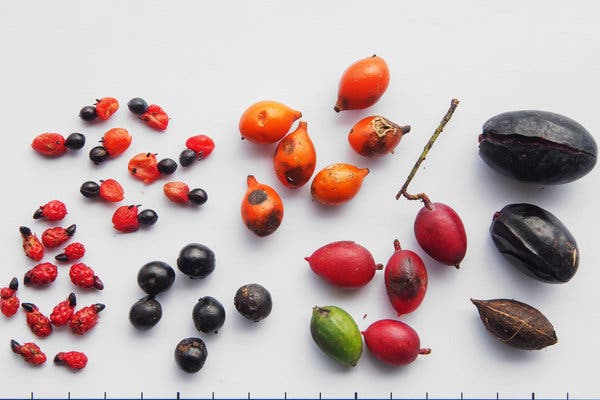Humans can be a terrible influence on birds. Crows that live near us end up with high cholesterol, sparrows screech to be heard over oil pumps, and instead of migrating, some storks now just eat trash.
At times, our habits and behaviors are contagious enough to change whole ecosystems. According to a study published in Royal Society Open Science on Wednesday, members of a particular New Zealand bird species, weka, that spend time around humans become worse at a crucial task: seed dispersal.
The study suggests that human interaction with weka “could be changing the spatial structure of new plants to a noticeable extent,” said Kim McConkey, an adjunct assistant professor at the University of Nottingham, Malaysia, who was not involved in the study.
Weka, ground-dwelling birds found in New Zealand, have long bills, big stomachs and gizzards full of grit. They have no problem swallowing seeds, even big ones — like those in the fruit that falls from New Zealand’s hinau and miro trees, which can be about a centimeter in diameter. In fact, weka are critical seed dispersers for large-seeded plants like these, bringing them into new areas by eating their fruits, moving around and then excreting the seeds. Being spread out in this way helps the plants to avoid pathogens, and allows them to grow without competing with each other for space, nutrients and sunlight.
Weka are also bold and curious, and eat many things besides fruits — including invertebrates, the eggs of other birds and human food, said Dr. Jo Carpenter, a postdoctoral researcher at Manaaki Whenua Landcare Research and the lead author of the new study. Many New Zealand picnickers have left their lunch unguarded for a moment only to have it snatched by a weka.
[Like the Science Times page on Facebook. | Sign up for the Science Times newsletter.]
The birds will even “steal a sock, or a teaspoon,” said Dr. Carpenter, who was a researcher at the University of Canterbury in Christchurch, New Zealand, when the study was conducted. “They are real rascals.”
In the woods, weka roam around searching for food. But the ones that spend time in campsites and picnic areas tend to lurk, waiting for humans and the snacks they bring, Dr. Carpenter said. Last year, she began to wonder: Are the weka that hang out with people slacking off when it comes to seed dispersal?

To find out, she and her co-authors devised two related tests. First, they used GPS trackers to measure how far weka from a few different areas traveled over the course of two weeks. This involved capturing 46 of the birds, using noose traps baited with cheese. (Weka “are complete cheese fiends,” Dr. Carpenter said.) Some of these study subjects were campsite regulars while others lived in the forest, away from humans.
Next, the researchers wanted to find out how long it takes a seed to move through a weka’s gut. They did this by embedding hinau and miro seeds with passive integrated transponder, or PIT, tags — the same devices used for microchipping pets. She then added a scanner to the shelter where the birds’ food was kept. Each time a weka entered the shelter, the scanner would indicate whether a tagged seed was still in its gut.
Miro seeds were evacuated after an average of 38 hours, while it took five days for the weka to pass the hinau seeds. This is “amazingly long,” and an interesting finding in itself, said Dr. Doug Levy, a program officer at the National Science Foundation, who was not involved in the study. “Most fruit-eating birds have retention times measured in minutes.”
The researchers then combined their two data sets, and used them to run simulations modeling how far the birds might carry the seeds. In these simulations, weka living in the forest moved seeds an average of 50 to 350 meters. They occasionally brought them over two kilometers, far enough to achieve long-distance seed dispersal — “important for gene flow between different plant populations and colonizing new habitats,” Dr. Carpenter said.
The campsite-dwelling birds were less impressive. On average, they carried seeds only about half as far as their forest-roaming peers. “They’d still provide the most basic kind of function” — getting the seeds away from their parent plants, Dr. Carpenter said. But the long-distance effects would be reduced.
The findings serve as a kind of double-edged performance review, showing how helpful weka can be at seed dispersal while pointing out the ways in which humans are undercutting them.
“I think we’ve really underestimated weka,” Dr. Carpenter said. But “we’re impacting how effective they are.”

